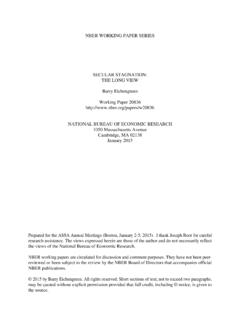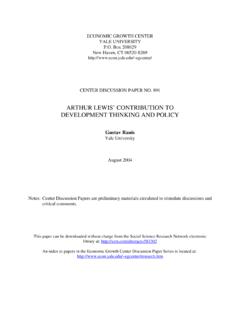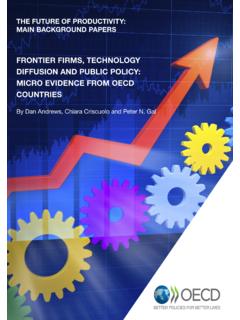Transcription of 2017 - lasalle.com
1 INVESTMENT STRATEGY StaffKevin AnsongMary BurkeJade CheongAlejandro DiaqueKayley GafurJack HopperElton LiAya MiyazakiChris PsarasSophia SulJared SullivanAnnabel WestContributing AuthorsDavid BaskeyfieldZuhaib ButtSimone CaschilliCatherine ChenIr n Foss Anne Koeman-SharapovaYasuo KonoChris LangstaffDaniel MahoneySimon MarxLaSalle Investment ManagementLynn ThurberChairmanJeff JacobsonChief Executive OfficerJulian AgnewRegional CIOU nited KingdomMark Gabbay Regional CEOAsia PacificAlok GaurCo-Head,Client Capital GroupDavid Ironside Regional CIOC ontinental EuropeWade Judge Regional CION orth AmericaJason Kern Regional CEON orth AmericaStanley Kraska, Jr. Head of Global SecuritiesSimon Marrison Regional CEOE uropeAlan Tripp Managing DirectorUnited KingdomManaging EditorsJacques GordonGlobal StrategistRobin GoodchildInternational DirectorGlobal Research and StrategyElysia Tse Regional DirectorAsia Pacific Research and StrategyRichard Kleinman Managing Research and StrategyWilliam MaherInternational DirectorNorth American Research and StrategyMahdi Mokrane Regional DirectorEuropean Research and StrategyJon Zehner Co-Head, Client Capital GroupLeigh WarnerManuel ZapataDennis WongHuw Williams3 Chapter 1 Investment Outlook15 Chapter 2 Portfolio Management38 North America23 Chapter 3 Regional Investment Outlook24 Asia Pacific47 Chapter 4 The Changing Role of Real Estate in a Portfolio31 EuropeISA 2017 The winds of change will be blowing throughout the world economy in 2017.
2 Headwinds and tailwinds can both be expected, along with market turbulence. After seven years of slow and steady improvement in real estate fundamentals and values in many countries, the pace of change has begun to accelerate. In this year s Investment Strategy Annual, we distinguish between cyclical, secular, and structural changes in the countries where we are most active. During periods of market turbulence, real estate income streams play an important, stabilizing role in an investment portfolio. Yes, the valuation of income streams can be buffeted by volatility in the capital markets. However, the financial characteristics of rental income will matter much more in 2017. The principal drivers of value will shift from yield compression to income stability and growth. LaSalle s view is that investors are likely to encounter stretches of elevated capital market volatility in 2017-2018. We do not expect a repeat of the Global Financial Crisis (GFC).
3 Instead, we see pockets of high liquidity juxtaposed with gaps in the supply of capital. Unlike the GFC, when major markets were highly correlated, we see great variety in both real estate fundamentals and capital markets in the different countries where we 1 Chapter 1 Investment Outlook4 ISA 2017 The Global Outlook for 2017 and BeyondOver the last seven years, macroeconomic conditions contributed to unusually strong and stable real estate performance. However, a series of cyclical, secular, and structural changes are likely, so investors should prepare for turbulence in the years ahead. Cyclical and secular changes are a response to broad economic or societal forces; structural shifts occur when the rules that govern societies and markets undergo a major transformation. Structural shifts can be abrupt and are often initiated by political events, new regulations, or a disruptive They are also linked closely to cyclical and secular forces; frequently, a structural shift is the political or regulatory response to cycle volatility or to the gradual realization of a long-term trend.
4 All three kinds of change have been evident in the s Brexit referendum, the election of Donald Trump in the , and the centralization of President Xi Jinping s core leadership in China. In short, after a period of relative calm in the capital markets in 2010-2016, investors may encounter different risk-return conditions over the next five years as structural change takes center stage. The broad economic and financial landscape has changed dramatically since 2010. Economic conditions in developed countries are now much stronger, balance sheets have been repaired, and real estate fundamentals in many cities have fully recovered from the Great Recession. China powered through the Global Financial Crisis and has joined the largest economies in the world as a steady contributor to world growth and rising real estate Tens of millions of people in emerging markets have been lifted out of poverty over the last seven years and now generate incomes that are driving consumer spending or fund savings and investment growth around the world.
5 Yet, the starting point for real estate pricing in 2017 is significantly higher than it was in 2010. Cyclical and secular trends, accompanied by structural shifts, have all moved forward in ways that create new challenges and opportunities for investors. Put another way, the last seven years have fully restored the capital base of real estate to roughly where it was in 2007; and in global gateway cities, it is now much larger and deeper. The same building stock that served the 2007 economy cannot sustain the 2017 economy at the same level of productivity. The aging stock must adapt and needs to be expanded to accommodate 10% to 12% larger economies in G7 (rich) countries and 30% to 40% larger economies in emerging markets. Economic activity is also now distributed differently across the cities of the world. Relative to 10 or 20 years ago, it is more concentrated in urban areas and, through trade, more interconnected to international markets.
6 The 2017 stock of buildings will need to continue to grow and adapt to all the changes that are coming by 2027. LaSalle s Investment Strategy Annual is intended to help real estate investors anticipate these movements, so that they can take actions now to address future needs, thereby preserving and growing the value of their real estate 0%1%2%3%4%5%6%7%2016 Forecast2017 Forecast2018 KoreaChinaGDP GrowthGDP Growth ForecastsModest Improvements in the World Growth Outlook ExpectedSource: Bloomberg Survey of forecasts as of 2016 Outlook Chapter 1 5 ISA 2017portfolios. As in past years, in this edition we reexamine the outlook for secular trends in demographics, technology, and urbanization (DTU). We also introduce a fourth factor, E the role of the environment through climate change, sustainability initiatives, and the health/welfare of building users as an additional long-term trend to consider (DTU+E).
7 Lower for How Much Longer? After three decades, the era of falling interest rates and capitalization rate compression is nearly over. It is now time for real estate investors to focus more on income generation as the primary source of return for core real estate. A review of recent economic history: The Great Moderation (1995-2007) led to an unsustainable expansion of credit and the Great Recession (2008-2009). The Great Recession led to the great monetary stimulus experiments of 2009-2016. Eventually, these central bank led stimulus programs could lead to a Great Unwinding or normalization of monetary policy (2018-?), where expansionary fiscal policy is balanced with inflation-targeting, infrastructure investment, and private sector expansion. The other unpleasant possibility is secular stagnation, 3 characterized by flat or declining productivity, low labor force participation rates, and an aging society with declining birth rates.
8 Core real estate, held primarily for its income-generating ability, would likely still be attractive for retirees under this scenario, but the faster-growing parts of the world economy would suffer and so would the tenants who support real estate s income streams. Emerging countries, especially those with a huge trade surplus like China, can afford to continue to stimulate their economies and their real estate markets indefinitely. Developed countries, however, could enter the great unwind 4 at different times and in diverse ways. Countries like Australia, Canada, France, Germany, the Netherlands, the United Kingdom, and the United States face a dilemma. Rising asset prices, including those for commercial real estate, do not continue forever, even when there is healthy, broad-based growth. So a combination of expansionary fiscal policies and normalization of monetary policy could become a defining feature of the next seven years for several of the G7 countries.
9 As the unwinding process begins, investors should focus on these macro strategies: (1) take advantage of the shift from monetary to fiscal stimulus,5 (2) find assets where the income stream can keep up with or exceed rising inflation,6 (3) fill gaps in the capital stack through financial structures where upside is traded for a 1 Structural change broadly defined: Changes in the institutional, political, regulatory, or corporate order that governs a decision-making body or a market. A national example: The relaxation of China s long-standing one-child policy. A global example: The rapid adoption of ride-sharing services like Uber, Didi Chuxing (China), BlaBlaCar (Western Europe), or Grab (Southeast Asia). 2 Much of this growth occurred at the expense of a massive build-up in Coined by Alvin Hansen in 1938 to describe the Great Depression and revived by Larry Summers in 2010 to describe the slow recovery from the Great Recession.
10 4 Coined in 2013 by George Packer in The Unwinding: An Inner History of the New America to describe the breakdown in American institutions; then used by financial analysts to describe the process of normalizing monetary policy. 5 For example, specific locations and cities that benefit from new roads, transit, or public recreational facilities. 6 Within the G7, the and the are closest to rising inflation, while Japan and countries in the eurozone are furthest. 10-Year Yields Jump in October and NovemberImplied 10-Year Rates in 2026: Same or Lower Relative to a Year Ago, Except Government Bonds10-Year Yields, % Curve Implied 10-Year Rate in 2026 CountryBased on Yield Curve 12/13/15 Based on Yield Curve 12/07/16 Change (bps) + +21 Sources: Bloomberg and LaSalle Investment as of December 7, 1 Investment Outlook6 ISA 2017entirely predictable or obvious, and may not arise for several Each country has its own set of circumstances that will lengthen or shorten the triple-low macro environment.






